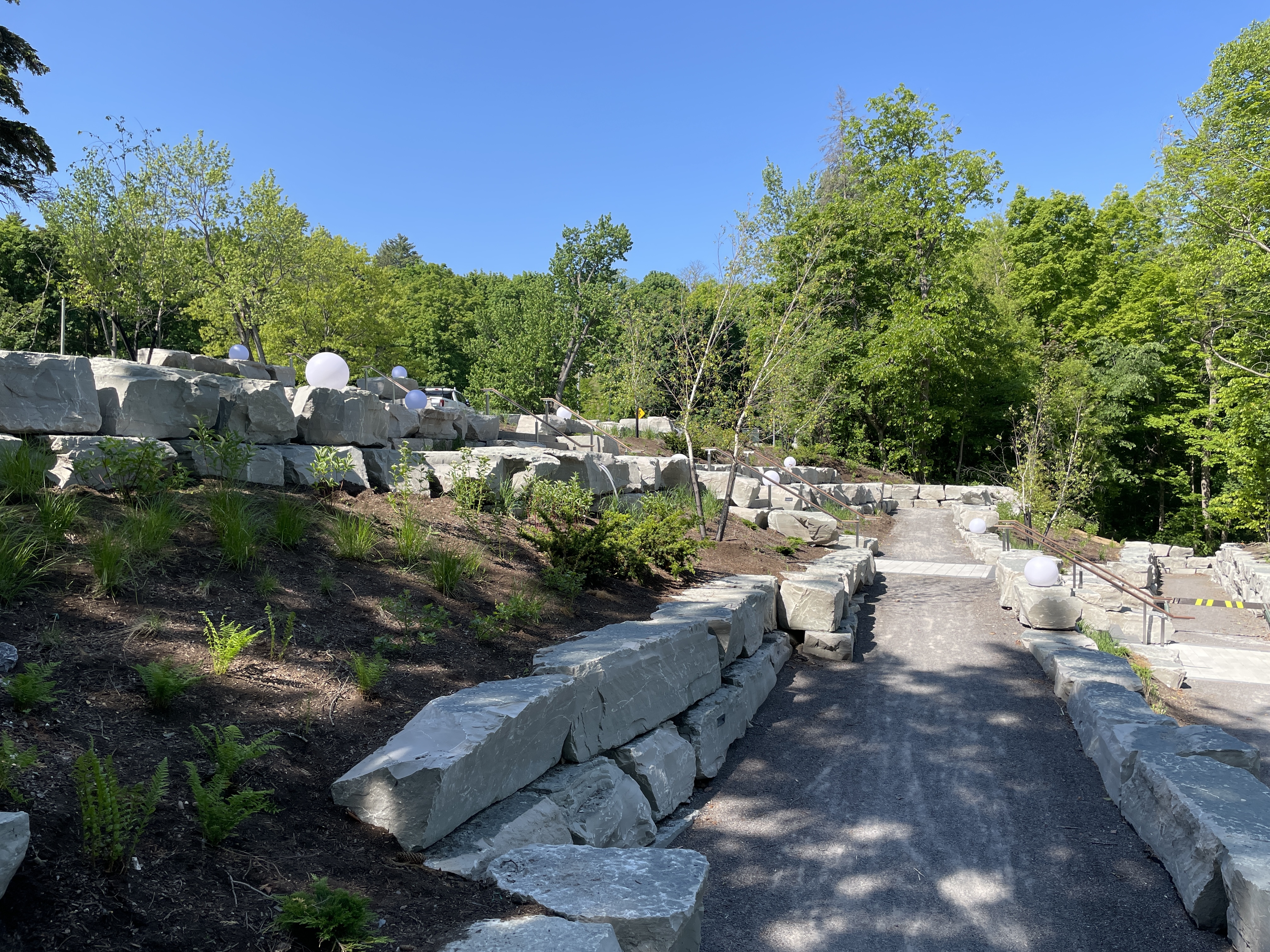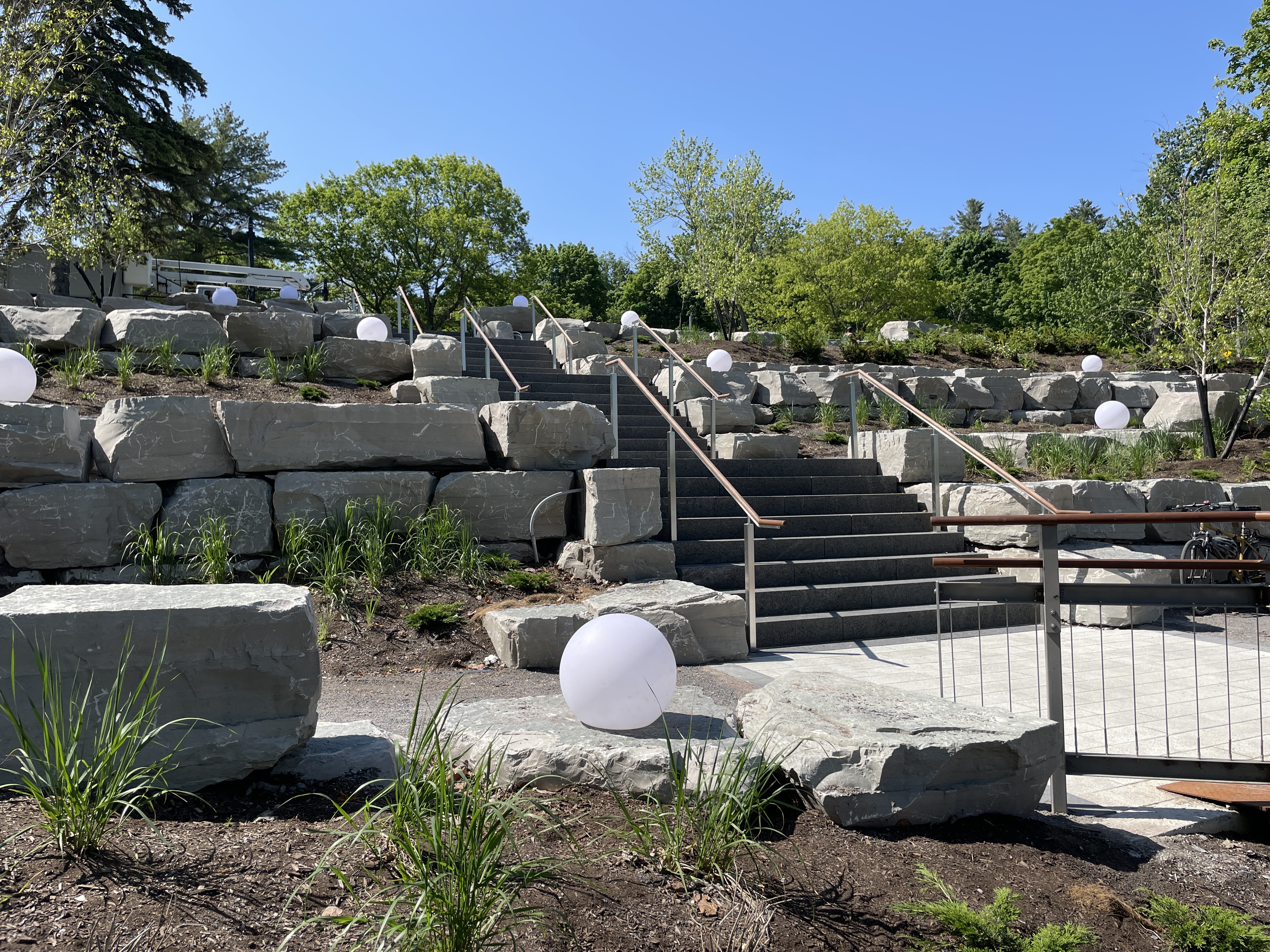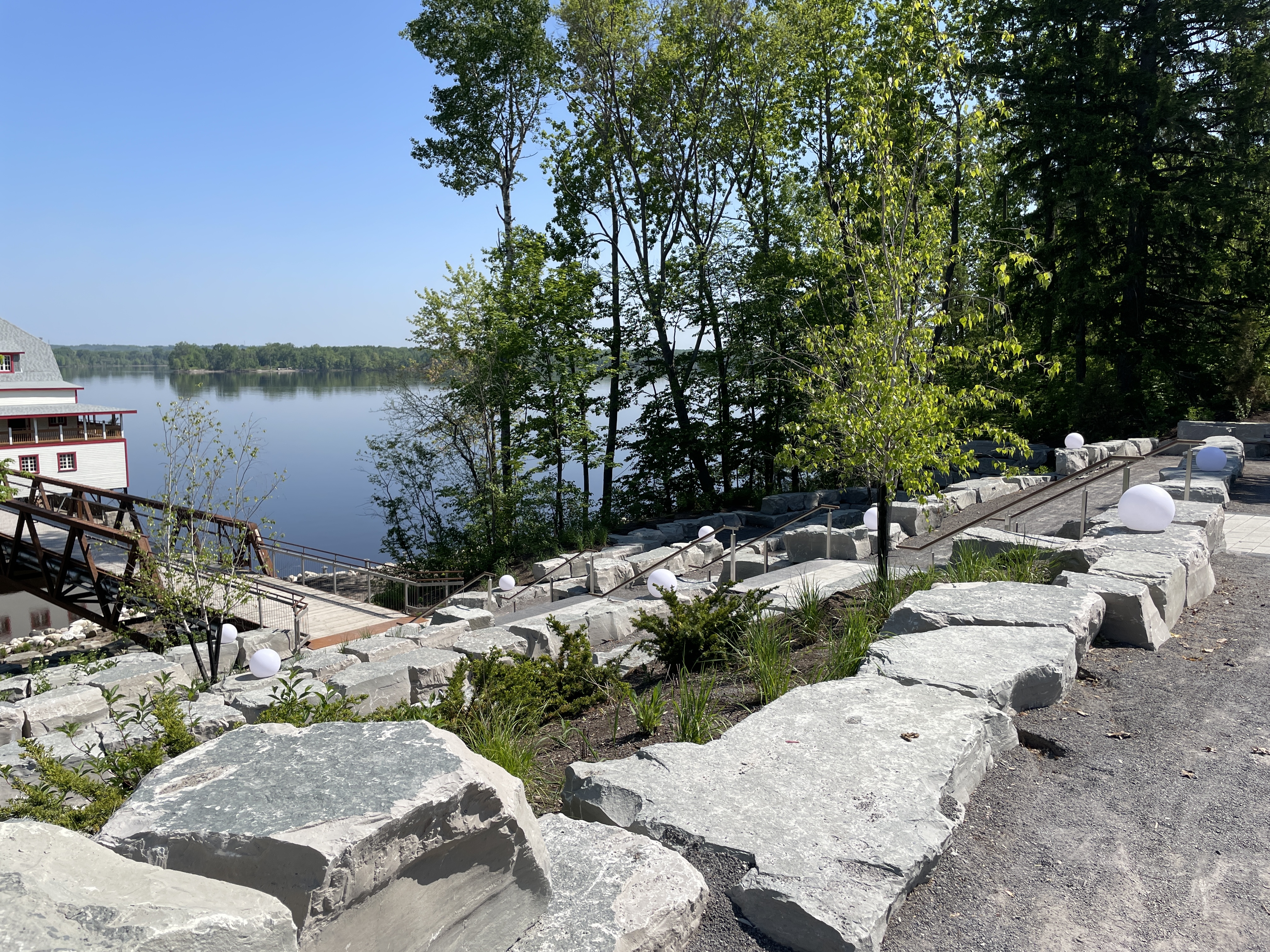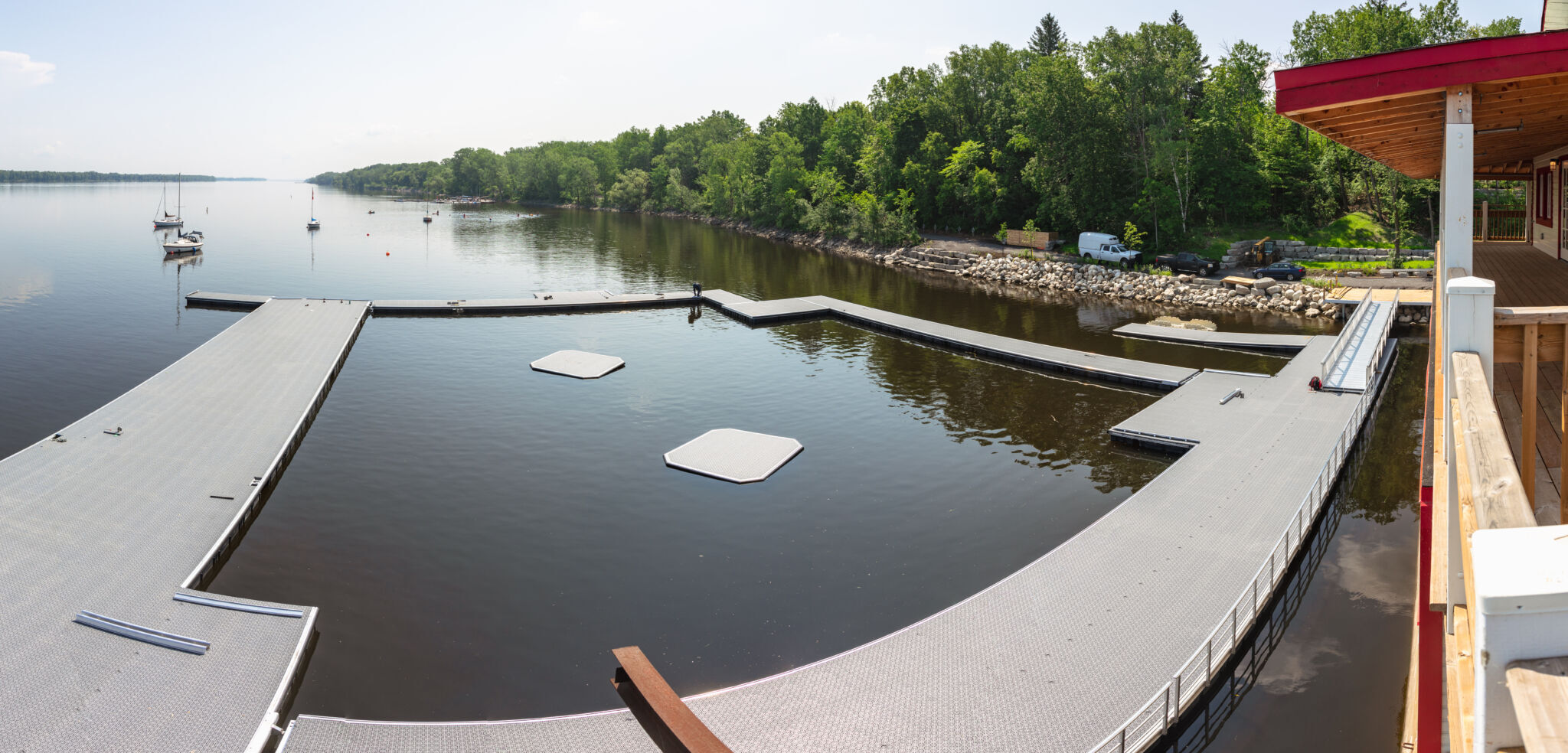Now open
The work is complete and the NCC River House is now open to the public.

To protect this heritage building — a historic landmark — and to make it universally accessible for all Canadians to enjoy year-round, several elements were restored.
The NCC River House, previously known as the National Capital River Pavilion and the Ottawa River Boathouse, is a remarkable structure designed by architect C.P. Meredith, and constructed between 1914 and 1925 for the Ottawa New Edinburgh Canoe (ONEC) Club. It has been the site of canoeing, boating and recreational activities for nearly a century.
In 2010, the boathouse was designated a Recognized Federal Heritage Building because of its links to the history of canoeing in Canada, its architectural value as a rare example of early boathouse design, and its remarkable setting on the river.
About the project
The River House revitalization project brought required repairs and upgrades to this heritage property to make it usable year-round. It now provides new opportunities for public access and shoreline animation. The work outlined below began in summer 2019, and is now substantially complete.
Building
Work to preserve the heritage character of the pavilion, and allow four-season use of the two upper levels, will include the following:
- the conservation, repainting and reinstatement of the existing wood siding;
- the introduction of a standard exterior wall assembly, including thermal insulation, continuous water, air and vapour barriers, and interior drywall;
- the conservation of viable heritage windows for reuse on the club level, which will continue to be for three-season use;
- the installation, on the two upper floors, of new windows of a design that is compatible with the historic character, but that provides the required thermal performance.
Universal accessibility
The NCC River House rehabilitation project included universal accessibility improvements which maintained the essence of the building’s heritage character, use and function. These include the following changes:
- converting an existing parking lot into universal accessible parking;
- providing a safe crossing of the Sir George-Étienne Cartier Parkway for all users;
- creating a universally accessible path from the parkway to the pedestrian bridge landing;
- raising the pedestrian bridge to the original hall level;
- installing an elevator inside the building to allow access to the three main levels of the building.
Replacement of the pedestrian bridge
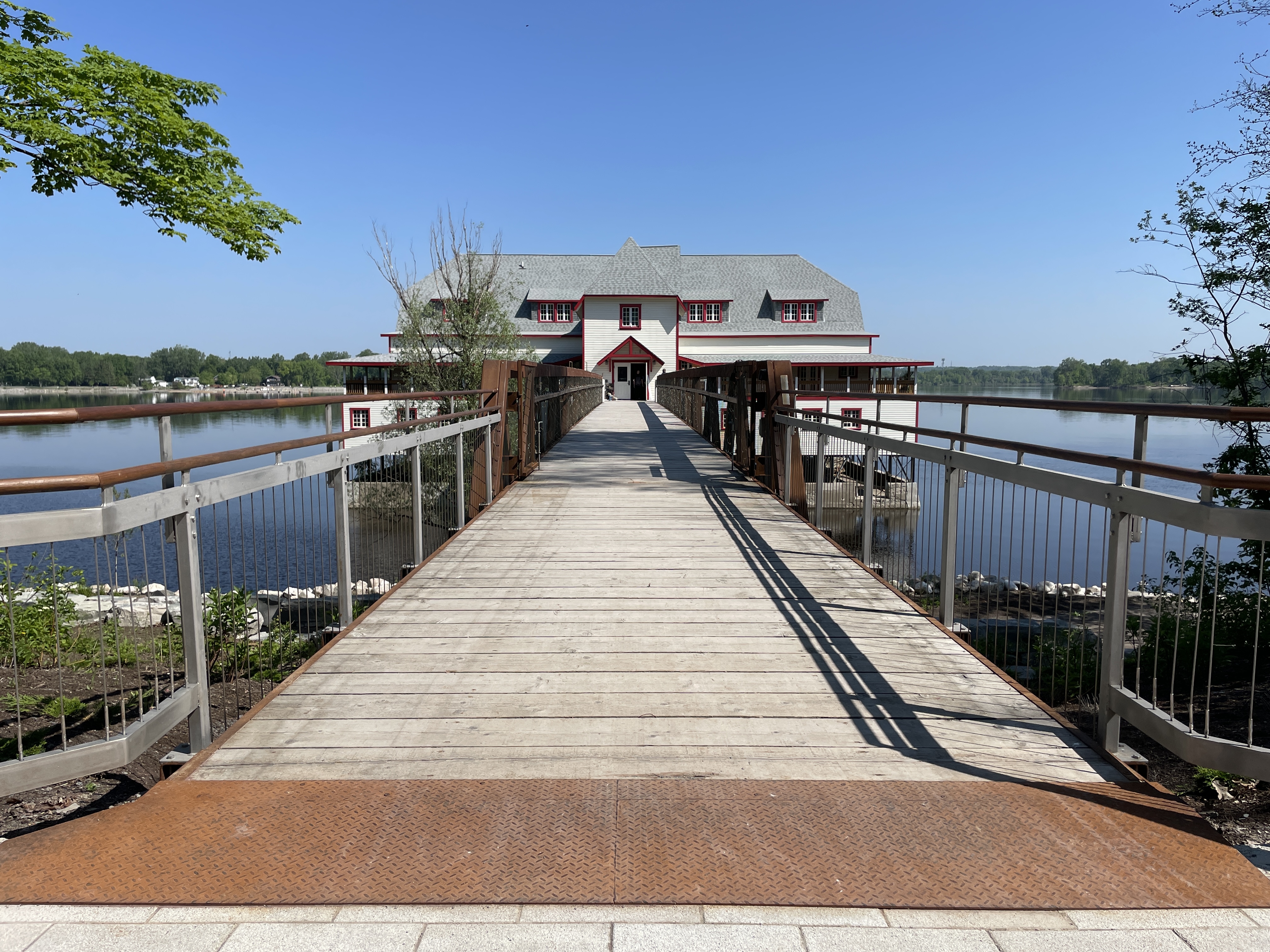
The existing bridge and foundation had reached the end of their life cycle. They were deemed unfit for repair and reuse, and were replaced.
A new, prefabricated bridge made of Corten steel, compatible with the nautical and transportation style of the boathouse facility, has been installed at the bridge’s historic level. The new bridge now has a longer span to reach the escarpment, which has allowed for the creation of universally accessible pathways from the parkway to the new raised bridge landing.
The bridge also features a custom guard rail which is a contemporary reinterpretation of the historical wood balustrade of the building.
Landscape and Shoreline Animation
We have transformed the shoreline to offer a unique experience and access to the Ottawa River.
The work has addressed the following:
- landscape design and improved shoreline resiliency for the site
- traffic and parking management for the site
- the design and implementation of a new, universally accessible public dock infrastructure
The landscaping started in spring 2023. It is now completed, along with the installation of a new dock system.
Site services
Site services include the following:
- new sanitary services out of the flood plain;
- electrical service upgrades;
- municipal water connection for potable water;
- a new sprinkler system as a part of the fire protection upgrades.
- a brand-new public dock providing access to the shoreline and a swimming area.
The forecasted budget of this project is approximately $20 million. Part of this budget comes from the $228.6 million the NCC received in federal funding for critical repairs of high-impact and high-value assets between 2018 and 2023.
